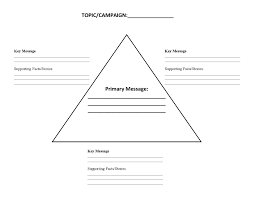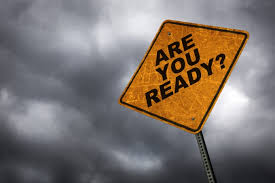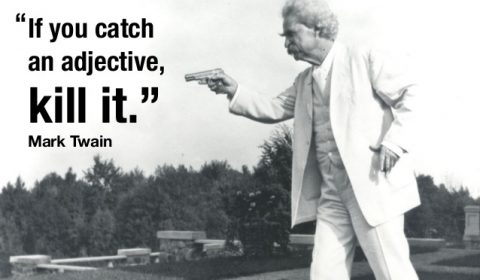Crisis Mode
Crisis. This is something of a taboo in businesses. Something no one wants to believe will happen, and therefore, when it does, there’s a good chance that there is no concrete communication plan. If you don’t have a plan, it won’t only be the crisis that puts your company under, but the fact that your employees and publics will be left in the dust and deem your company untrustworthy. So, it’s important to know how to communicate correctly to your publics during a crisis so that you can get yourself out of the media’s eye. To get yourself out of the media, you must cooperate with them first. Good communication will help you maintain people’s trust and confidence in you.
The Information Gap
When in a crisis it’s important to close what is called, “the information gap.” An information gap is when the audience doesn’t have all the necessary information on your crisis, so they are seeking out answers. If you don’t close the gap in a timely manner, false information and damaging rumors can get out about your company, making it harder and harder to close the gap. In order to close this gap effectively and efficiently, you must communicate with the media to give correct information on crisis details that your company is willing to share. Once the gap is closed and the public is pleased with the amount of information you have given, then you will be out of the media and out of the public’s minds, thus ending your crisis…with the public at least.
Some Tips on How to Communicate During a Crisis
Pick a spokesperson. This does not have to be the CEO. It should be someone who can speak expertly and confidently on camera. You could also bring in other spokespeople like specialists on the topic (doctors, lawyers, etc.). Bringing in a specialist provides more credibility on the issue and makes your claims more believable. However, make sure you limit the number of spokespeople you have to maybe one or two so that your key message and facts can remain the same across all statements. Having too many spokespeople can cause fact mix-ups and too many opinions circulating through the news.
Make a message triangle. A message triangle is a tool that you can create in order to structure three important key messages in a concise manner to your intended audience. It helps you keep in line exactly w hat you have to say before you have to say it so that you’re not caught off guard by any questions or statements. It helps you create key statements with supporting facts. What is it that you want your audience to know? What do you want to ring through every message you give to the media? Figure that out and come up with supporting statements, this way both the media and your publics won’t have to question what it is your trying to get across. The messages will remain the same throughout everything you do.
hat you have to say before you have to say it so that you’re not caught off guard by any questions or statements. It helps you create key statements with supporting facts. What is it that you want your audience to know? What do you want to ring through every message you give to the media? Figure that out and come up with supporting statements, this way both the media and your publics won’t have to question what it is your trying to get across. The messages will remain the same throughout everything you do.
Don’t forget about your internal publics.
Internal publics should be told what’s happening first and foremost. Leaving them out of the loop will cause them to become untrustworthy and disloyal toward your company… hurting you more during a crisis. You can easily let them know what’s happening via the company intranet and easily keep them updated via the intranet as well. Make sure they know they are valued; if employees are angry they will go to the media (with false/damaging information) and could even quit their jobs.
Set Up Interviews and Beware of Trick Questions.
Disrespecting a journalist will do the same kind of damage as disrespecting your staff. A journalist can twist the story in your favor or not. You want journalists on your side so they can be utilized to help you get out of your crisis faster, not sink you further. Some journalists however, will be unrelenting no matter how pleasant you are. Don’t get trapped by their tricks. A reporter’s job is to dig a little so they can tell a good story. Listen to their questions, answer truthfully (use your key message triangle), be pleasant, and respect their deadlines. Practice before the interviews. Don’t speculate on what could have been or what could be; don’t get trapped into using jargon (this cuts you off from your audience); don’t force blame on to anyone; and remember…nothing is off the record. Here’s what the media wants to know from you:
- What happened
- If there was death or injury
- How much damage there is
- If future damage is expected
- Why it happened
- Where responsibility lies
- What you’re doing about it
- When it will end
- If anything like this has happened in the past
- If there were warning signs
Social Media During a Crisis
With the technological age we’re in now, people demand updates, and fast, so it’s important to keep up on social media. It is a good idea to have someone running social media during a crisis as this is a great way to provide updates effectively and efficiently. However, you should be sure to line up your social media posts with the key message your trying to get across in other forms of media so all of the information lines up. On your social media, it is never a good idea to delete negative comments from your pages. People will see this and think you are trying to keep something from them. It will cause a lack of trust and create an even bigger crisis. Respond to negative comments, if necessary, with truthful responses. Do not place blame on the commenter, just leave a neutral response that satisfies the commenter and everyone else reading it. Make sure your employees know your social media policies, and make sure your employees are not posting any opinions or false information about the crisis at hand. Just be sure to monitor your social media, stay in the conversation, give the correct facts, and keep in touch with your audience. The publics will appreciate the fact that you are being transparent with them.
Your Crisis is Over, Now What?
Always be prepared for the next crisis. Every crisis you have is a good learning experience to see what you did wrong and what you did right. From that you can come up with a crisis communication plan and assess the potential risks that haunt your company. Lastly, don’t forget that even though your crisis might have ended, you might be troubled by the media on anniversaries of it. So, be aware and know how to handle the future conversation about the crisis. Don’t be thrown off guard if every one, five, or ten years your company comes back into the public’s eye for a crisis that happened years ago.









